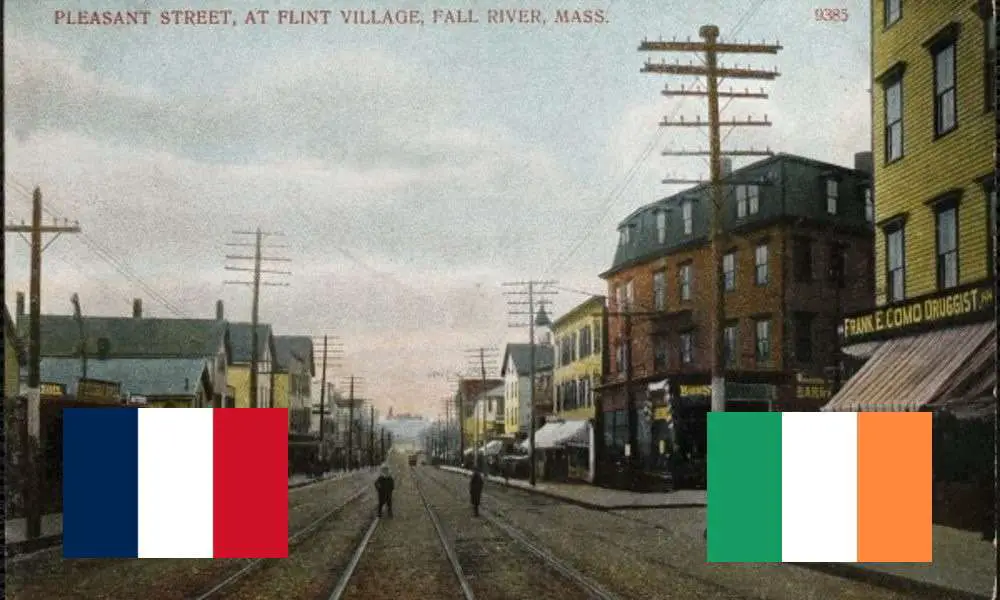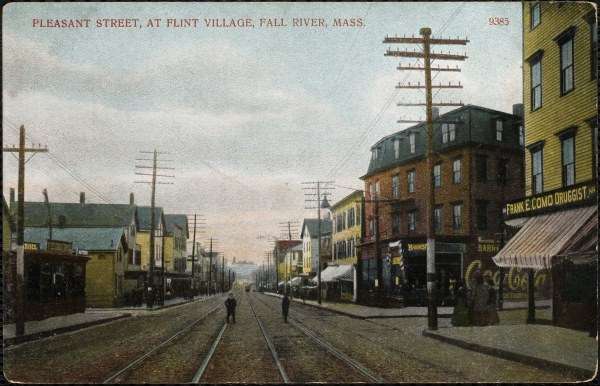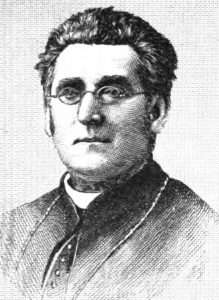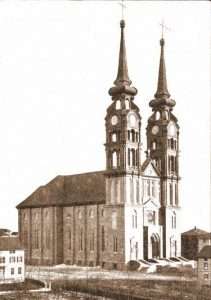In 1884, a French parish in Fall River, Mass., locked its Irish pastor out of the church and made his life a living hell. Parishioners evicted him from the rectory, seized the parish finances, insulted him on the street and disrupted Mass. The ensuing turmoil went all the way to the Vatican.
Bishop Thomas Francis Hendricken had deliberately appointed Father Samuel McGee as pastor of Notre Dame de Lourdes. He wanted the clannish Franco-American parishioners to assimilate to their new home. The parishioners resisted. One Franco-American said he would ‘stand on the brink of hell’ before accepting an Irish pastor.
The French and the Irish didn’t get along in many New England cities, not just Fall River. Most were poor Quebecois who had left grinding poverty in Canada to work in New England’s textile mills. They earned the enmity of the Irish, who had come before them, because they worked for lower wages, even as strikebreakers. The French, in turn, resented the Irish who came to dominate local politics – and, in many cases, the Roman Catholic Church.
In Fall River, Bishop Hendricken made matters worse by insisting the French parishioners submit to his authority. The Franco-Americans retaliated by going to Rome and threatening to break off from the Roman Catholic Church.
The French Parish
French immigrants from Canada fiercely protected their language and culture, which they called ‘survivance.’ They viewed their parish priests as the guardians of their identity and as reminders of their absent homeland. And they felt they had a right to a Franco-American priest.
In 1874, a charismatic Franco-American priest, Father P.J.B. Bedard, established the Parish of Notre Dame de Lourdes in the village of Flint. It had about 250 Franco-American families and 40 Irish families who worshipped in a small wooden chapel.
Eight years later, the Irish broke off and formed their own church nearby.
“This action drew a line between the French and Irish Catholics of Flint Village, and both parties were content in their own independence,” reported the Boston Daily Globe.
Bedard died suddenly and his sickly replacement soon put in for a new assignment.
That gave Bishop Hendricken his chance. Born in Galway, he opposed the ethnic-language churches. And so he appointed an Irish-Canadian priest, Father Samuel McGee.
When a delegation came to him to demand a French priest, Hendricken told them McGee came from Canada and spoke French better than they did. To make matters worse, he said they’d all be speaking English in 10 years anyway.
Samuel McGee
The members of the French parish retaliated against the bishop by making life miserable for the Rev. Samuel McGee.
When the priest tried to enter Notre Dame de Lourdes in December 1884, he found the doors nailed shut. When he finally got into the church, parishioners confined him in the vestry and threatened him with violence.
They evicted him from the rectory, and he went to live with his brother. They kept his share of the collections and refused to let him officiate at baptisms and weddings.
McGee couldn’t walk down a street without hearing hoots and insults from the French parishioners. They threw stones and whiskey bottles filled with sewage through his window at his home. Vandals broke into the church and disabled the organ bellows.
Ironically, attendance at the French parish increased when McGee said Mass, but for the wrong reason. Parishioners came to church to disrupt the service. When Father McGee tried to give a sermon, the parishioners coughed so loudly they couldn’t hear his voice. Four police officers stationed in the church couldn’t do anything about it. Father McGee continued speaking over the cacophony.
“Father McGee is evidently possessed of considerable pluck,” reported the Globe.
Things got worse. Parishioners followed him out of Mass and called him ‘a damned Irishman.’ When a crowd of Irish Catholics arrived to support Father McGee one Sunday, the police had to quell the near-riot that ensued.
The choir of the French parish refused to sing, so McGee organized a new one. Then he discovered the old choir had locked the entrance to the choir loft. The old choir wouldn’t leave, so the priest called the police, who arrested four of the choir members. A judge fined them $1 each.
Rome Intervenes
Samuel McGee finally asked for a reassignment, and Bishop Hendricken complied. But he stunned the members of the French parish in February 1885 when he suddenly closed the church.
The laymen of Notre Dame de Lourdes raised money to hire ecclesiastical lawyers in Rome. They sent a Fall River liquor dealer, Narcisse-Rodolphe Martineau, to the Vatican to plead their case.
Martineau received two audiences with Pope Leo XIII and with the cardinals. “Representations have been made to the Pope that, if the disaffection in the French parishes continues, there may be a large secession from the Catholic communion,” reported the Globe.
Conversely, Bishop Hendricken believed he wouldn’t be able to govern his diocese if Fall River’s French parish prevailed. He reopened Notre Dame de Lourdes with another Irish priest. A thousand parishioners boycotted the Mass. Again Hendricken closed the church.
In the end, the Vatican intervened. Hendricken was told to calm things down with a show of leniency. In September 1885, 10 months after the trouble started, Notre Dame de Lourdes opened with an Irish priest and a Franco-American assistant. The parishioners, at first furious, realized the Irish priest was close to retirement. The French parish would soon have its French priest.
On March 21, 1886, the Rev. J.M. Laflamme was promoted as pastor for Notre Dame de Lourdes. Finally, the affair ended.
* * *
A great gift for anyone who grew up Irish in New England. Available now in paperback from Amazon. Just click here to order your copy.
With thanks to MassMoments, Historic Fires of Fall River by Stefani Koorey and Franco-Americans of New England: Dreams and Realities by Yves Roby. This story about the French parish in Fall River was updated in 2024.





5 comments
If the Bishop knew his history he’ed have appointed a Scot to that parish
If the Bishop knew his history he would have appointed a Scot to that parish
This explains why highly successful Franco-Americans are as scarce as hen’s teeth.
[…] the diocese assigned a French-speaking Belgian priest to the parish. The St. Ann parishioners, unhappy that he wasn’t French-Canadian, gathered in a snowstorm to bar him from saying Mass. The diocese caved to their wishes and […]
[…] to a French-Canadian textile worker. But they fared no better with the Irish. Before the first French church was built in 1873, the French had to walk through the Irish neighborhood to attend Mass. Irish boys […]
Comments are closed.